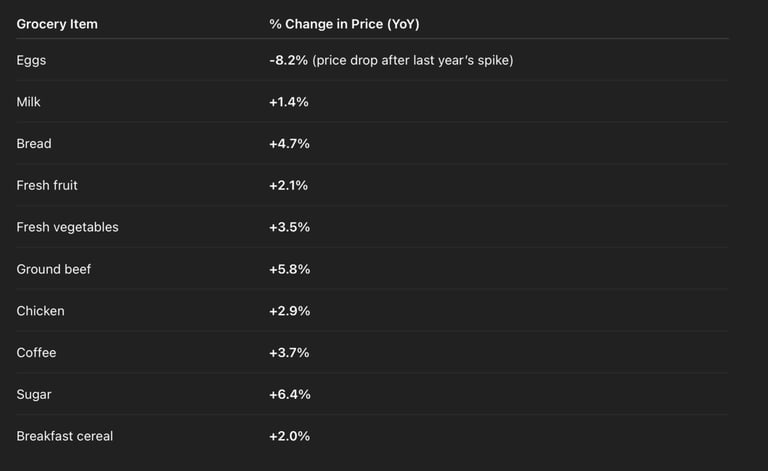Consumer Prices Rose 2.7% in July
— See How Grocery Item Prices Have Changed Over the Past Year
Kylo B
8/14/20251 min read
Consumer Prices Rose 2.7% in July — See How Grocery Item Prices Have Changed Over the Past Year
U.S. consumer prices climbed 2.7% in July from a year earlier, according to the latest Labor Department data, signaling a modest pickup in inflation after several months of slowing. Food costs remained a key driver, with the food index rising 2.9% year-over-year — keeping pressure on household budgets despite easing prices in other categories.
While the overall inflation rate is well below the 9% peak seen in 2022, many consumers say they still feel the pinch at the checkout line. Grocery bills remain stubbornly high, even as certain staples show signs of relief.
Where prices are easing
Egg prices saw the largest year-over-year decline, thanks to improved supply following last year’s avian flu outbreak. Dairy inflation has also cooled, with milk prices rising only slightly.
Where costs are still climbing
Protein-heavy items like beef remain costly due to higher feed costs and tight cattle supplies. Sugar prices jumped more than 6%, partly tied to global weather disruptions impacting crops.
Economists note that while grocery inflation is moderating compared to the sharp increases of the past two years, the cumulative effect means consumers are still paying significantly more than before the pandemic.
“Prices aren’t rising as quickly, but they’re rising from an already elevated base,” said Mariah Collins, a food policy analyst at the Consumer Price Institute. “Households feel it every week when they shop.”
With the Federal Reserve watching inflation data closely, the latest numbers may factor into decisions on future interest rate moves. For consumers, however, the focus remains on stretching grocery dollars as they navigate a still-expensive food landscape.




